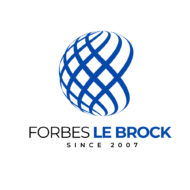Leverage Mezzanine Financing in Real Estate Development

Table of Contents: Understanding Real Estate Mezzanine Financing
- Introduction: Bridging the Gap in Commercial Real Estate Development
- Unlocking Value with Real Estate Mezzanine Financing
- How Mezzanine Financing Works in Commercial Real Estate
- An Example of Mezzanine Financing in Action
- When to Use Mezzanine Financing: Strategic Advantages for Real Estate Developers
- The Benefits and Risks of Real Estate Mezzanine Financing
- Mezzanine Funds and Private Equity in Real Estate Development
- Alternatives to Mezzanine Financing
- A Deep Dive into Mezzanine Debt Structures
- Case Study: Revitalising a Downtown Landmark with Mezzanine Financing
- Conclusion: A Powerful Tool for Strategic Growth
- Next Steps
🧠 No time to read? Get the key points of the blog post in this podcast discussion. 🎧 Catch it now!
1. Introduction: Bridging the Gap in Commercial Real Estate Development in 2025 and Beyond
For commercial real estate developers, securing adequate financing is a perennial challenge. Traditional senior debt often falls short of covering total project costs, while raising additional equity can dilute ownership and control. This is where mezzanine financing real estate emerges as a powerful strategic tool. In today’s dynamic market, where speed and flexibility are paramount, understanding and leveraging mezzanine finance can be the difference between a stalled project and a successful, profitable venture. This is particularly crucial for high-net-worth individuals (HNWIs) and C-suite executives seeking to maximize returns and optimize capital structures.
2. Unlocking Value with Mezzanine Financing Real Estate in 2025
Mezzanine financing is a hybrid of debt and equity financing that gives the lender the right to convert to equity in the company in case of default, generally after venture capital companies and other senior lenders are paid. This type of financing fills the crucial gap between senior debt and investment capital, providing developers with the necessary capital to complete projects without excessive equity dilution.
3. How Mezzanine Financing Works in Commercial Real Estate
Mezzanine financing in real estate acts as a bridge between the senior loan (typically a construction loan or first mortgage) and the developer’s equity contribution. It’s a subordinated debt, meaning it ranks below senior debt in terms of repayment priority but above equity. This higher risk for the mezzanine lender translates to a higher lending rate than senior debt, typically in the teens or even low twenties percentage range according to ClearThink Capital.
Here’s a breakdown of the key features:
- Subordination: In the event of a borrower default, senior debt holders are paid first. The lender receives payment only after senior obligations are satisfied.
- Hybrid Nature: Mezzanine financing is a hybrid of debt and investment capital. It often includes features like warrants or options that allow the lender to convert their debt to an equity ownership in the property or the development company.
- Higher Interest Rates: Because of the increased risk, mezzanine loans carry higher interest rates compared to senior debt.
- Flexibility: Mezzanine financing can be structured in various ways to meet the specific needs of the borrower and the lender. This flexibility is a key advantage.
- Mezzanine loans are subordinate to senior lenders but hold priority over both preferred and common stock, providing a balanced risk-reward profile for investors.
- Mezzanine loans often offer flexible repayment terms, tailored to the project’s cash flow projections, making them an attractive option for developers.
4. An Example of Mezzanine Financing in Action
Let’s consider a hypothetical development project:
- Total Project Cost: $100 million
- Senior Debt (Construction Loan): $60 million (60% Loan-to-Cost)
- Developer Equity: $20 million (20% of Total Cost)
- Funding Gap: $20 million
Instead of seeking equity investors, which would dilute the developer’s ownership, the developer secures a $20 million mezzanine loan. This mezzanine debt fills the gap between debt and equity, allowing the project to proceed.
The lender might charge a 15% lending rate and receive warrants that allow them to convert a portion of their loan into equity at a predetermined price. This provides the lender with potential upside if the project is successful.
5. When to Use Mezzanine Financing: Strategic Advantages for Real Estate Developers
Real estate developers should consider mezzanine financing in several scenarios:
- Funding Gaps: When senior debt and available equity are insufficient to cover project costs. Mezzanine financing bridges the gap between debt and the developer’s resources.
- Maximising Leverage: To increase overall leverage without exceeding the senior lender’s loan-to-cost or loan-to-value limits.
- Maintaining Control: To avoid significant equity dilution that would come with raising additional equity investment.
- Accelerating Growth: To fund multiple projects simultaneously, enabling faster expansion.
- Acquisitions: Mezzanine financing can be used for property acquisitions or development projects when speed is critical.
- Mezzanine financing also offers a way to retain more control over the project, compared to bringing in equity partners.

6. Benefits and Risks of Mezzanine Financing in Real Estate
Like any financial instrument, real estate mezzanine financing comes with its own set of advantages and disadvantages:
Benefits:
- Higher Leverage: Allows developers to undertake larger projects with less equity participation.
- Preserves Equity: Reduces the need for equity partners, preserving ownership and control.
- Flexibility: Loan terms can be customised to suit the project’s cash flow and timeline.
- Speed: Mezzanine financing can often be secured more quickly than traditional equity raises.
- Potential for Higher Returns (for Lenders): Junior lenders can achieve higher returns due to the increased risk and potential equity upside.
Risks:
- Higher Cost of Capital: The interest rates on mezzanine debt are significantly higher than those on senior debt.
- Subordination: In case of default, the mezzanine lender is paid only after senior debt holders are fully repaid. This is one of the highest-risk forms of debt.
- Potential Equity Dilution (if converted): If the lender exercises their warrants or options, the developer’s stake will be diluted.
- Complex Structure: Mezzanine financing agreements can be complex and require careful legal and financial review.
- Mezzanine loans typically involve a higher degree of risk compared to other debt types, requiring thorough due diligence.
7. Mezzanine Funds and Private Equity in Real Estate Development
Mezzanine financing is often provided by specialized mezzanine funds, private equity firms, and other institutional investors. These entities have the expertise and risk appetite to underwrite these complex transactions. They conduct thorough due diligence on the project, the developer, and the market before committing capital.
8. Alternatives to Mezzanine Financing
While mezzanine financing offers a valuable solution, it’s essential to consider alternatives:
- Preferred Equity: Similar to mezzanine debt, but typically ranks higher in the capital stack. It offers a fixed return and may have some equity upside.
- Joint Ventures: Partnering with another developer or investor to share the equity burden and risk.
- Raising Equity: Selling a larger stake to investors.
- Seller Financing: Negotiating financing terms with the seller of the property.
9. A Deep Dive into Mezzanine Debt Structures
Mezzanine debt is rarely a one-size-fits-all solution. The structure can vary significantly depending on the specific deal and the needs of both the borrower and the lender. Here are some common structural elements:
- Interest Rate: As mentioned, this is typically higher than senior debt, reflecting the increased risk. It can be fixed or floating, and may include a “pay-in-kind” (PIK) component, where a portion of the interest is accrued and added to the principal balance.
- Fees: Mezzanine lenders often charge origination fees, commitment fees, and other fees.
- Warrants/Options: These provide the lender with the right to purchase equity in the project or the development company at a predetermined price. This is a key element that gives mezzanine debt its hybrid nature.
- Covenants: These are restrictions and requirements placed on the borrower, similar to those found in senior loan agreements. They may include financial covenants (e.g., debt service coverage ratio, loan-to-value ratio) and operational covenants (e.g., restrictions on additional debt, asset sales).
- Intercreditor Agreement: This agreement governs the relationship between the senior lender and the mezzanine lender, outlining their respective rights and priorities.
- Mezzanine debt has embedded equity instruments, such as warrants, which allow lenders to participate in the project’s upside potential.
10. Case Study: Revitalising a Downtown Landmark with Mezzanine Financing
A real estate development firm, “Landmark Developers,” acquired a historic but underutilized office building in a major city’s downtown core. Their vision was to transform it into a mixed-use property featuring luxury condominiums, high-end retail, and Class A office space.
- Project Cost: $250 million
- Senior Loan: $150 million (60% LTC) from a major bank.
- Equity: $50 million from Landmark Developers’ own funds and a small group of existing investors.
- Funding Gap: $50 million
Landmark Developers initially considered raising the remaining $50 million through a second round of equity. However, this would have significantly diluted their ownership and control, potentially impacting their long-term profitability.
Instead, they opted for mezzanine financing. They secured a $50 million mezzanine loan from a specialized real estate investment firm. The loan carried a 14% interest rate and included warrants that, if exercised, would give the mezzanine lender a 10% equity stake in the completed project.
This mezzanine financing allowed Landmark Developers to:
- Complete the Project: Bridge the funding gap and move forward with construction.
- Maintain Control: Retain a larger equity stake than they would have with an equity raise.
- Maximize Returns: Benefit from the increased leverage and the potential for higher profits upon project completion and stabilisation.
The mezzanine lender, in turn, benefited from:
- High Interest Income: A 14% return on their investment.
- Potential Equity Upside: The opportunity to participate in the project’s success through the warrants.
- Security: While subordinate to the senior loan, the mezzanine loan was secured by the property and the developer’s assets.
This case study illustrates how mezzanine financing can be a win-win solution for both developers and lenders, enabling ambitious projects to proceed while optimizing capital structures and potential returns. Mezzanine financing is a complex but potentially rewarding form of debt and equity financing.
11. Conclusion: A Powerful Tool for Strategic Growth
Mezzanine financing real estate is a sophisticated financial instrument that, when used strategically, can unlock significant value for commercial property developers. It provides a crucial bridge between senior debt and equity, allowing developers to pursue ambitious projects, maintain control, and maximize returns. However, it’s essential to understand the risks and complexities involved, and to carefully evaluate the terms and structure of any mezzanine loan. For HNWIs and C-suite executives involved in commercial real estate, a thorough understanding of mezzanine finance is crucial for making informed investment decisions and optimizing capital allocation. This type of financing is a critical part of the real estate landscape.
12. Next Steps
If you are considering a commercial real estate development project and require strategic financing solutions, contact Forbes Le Brock today. Our team of experts specialises in asset-based lending, including mezzanine financing, and can help you structure a capital stack that aligns with your goals and risk tolerance. Let us guide you through the complexities of commercial real estate finance and unlock the full potential of your next project. With deep expertise in various debt structures, we are here to provide you with the tailored solutions you need for success.
